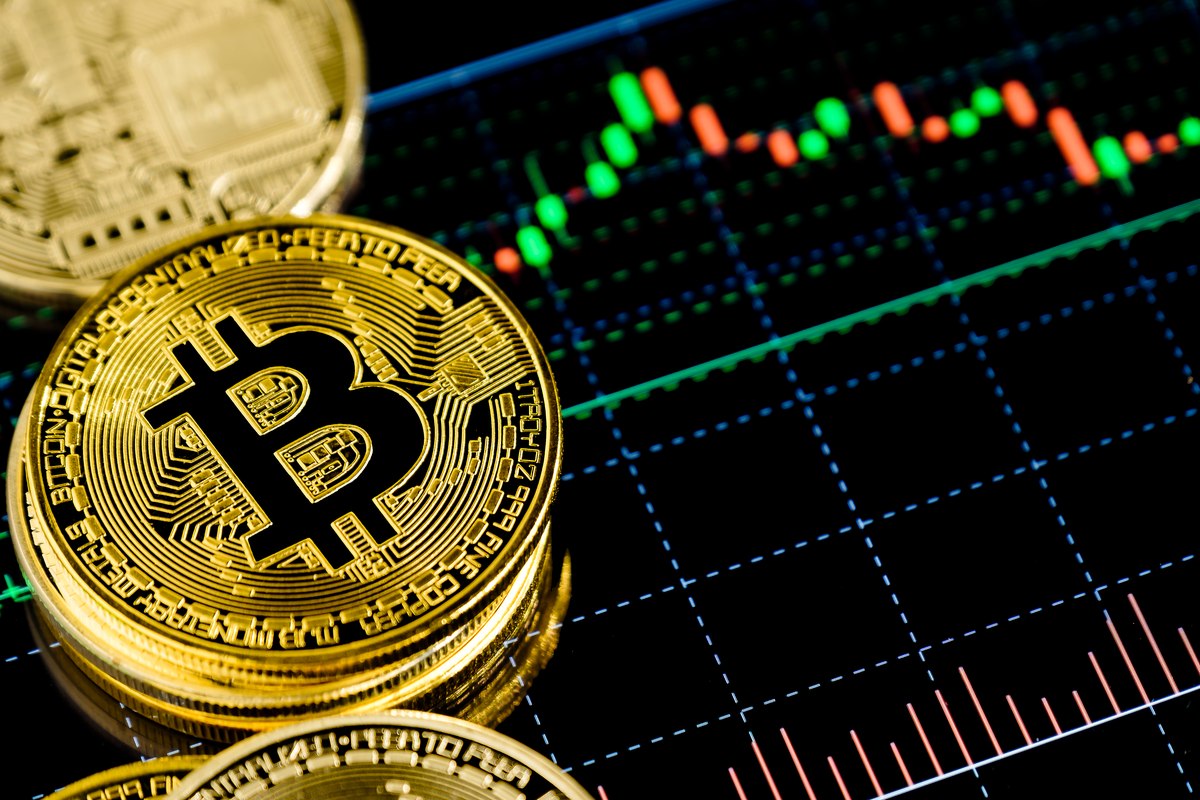Traditionally when money didn’t exist, people exchanged goods and services rather than money, commonly known as the barter system. However, the problem arose when gold was used as an exchange. Since it cannot be divided into parts. The value couldn’t be divided, and it was not easy to carry such heavy items. An idea popped of keeping gold in the form of a bond and then using the bond to exchange goods, instead of carrying them around the world. This bond was the first type of money.
Following that, money came into existence with banks helping people to keep it safe. The banks started lending people or valuable items with added interest, and even transferring money among each other. Earlier, financial education was a huge problem, as people depended on the government for pensions and after retirement life. Today, investments have made life simple and easy. With the emerging popularity of cryptocurrencies, DeFi is taking over the market and may just become the biggest finance in the world to invest in.
Also Read: How to Launch Your Own Cryptocurrency Exchange with Zero Coding and in Minutes?
Decentralized finance is an arising economic technology that is based on secure distributed ledgers that are similar to the one used for cryptocurrencies. The system helps to remove the organizations and centralized banks to have any control over their money, monetary services, and economic products. It eliminates the need for intermediaries allowing people, businesses, and merchants to perform monetary transactions through the use of technology. This can be attained by using connectivity, hardware improvements, security protocols, and software.
With decentralized finance, people can lend, trade, connect and borrow money using the software that records and verifies monetary actions in distributed ledger technology databases. Since it uses a consensus mechanism to ascertain the data it collects. Decentralized Finance allows people to access their money and have entire control over it by using personal wallets and trading services. Here’s what makes DeFi attractive to consumers.
Decentralized Finance works on underpinned blockchain technology that was first used to create cryptocurrencies. Blockchain technology is a distributed ledger technology that has a secured database, due to its immutable nature. Applications like dApps (decentralized applications) are utilized to run transactions on blockchain networks. Since with blockchain the transactions are recorded in the form of blocks and later verified by the users, they agree on transactions and the block is formed using cryptography. Similarly, another block is formed which saves information about the previous block inside it. The blocks are connected chains with information in every block, naming it “blockchain”. The information in any block cannot be changed or tampered with. The concept along with other protocols provides the highest security to the data.
Also Read: Ethereum Merge: A Domino Effect in the World of Blockchains??
To get an in-depth understanding of decentralized finance, it is important to understand how the underlying architecture that powers the DeFi system works. Here are technologies that comprise DeFi technology.
Blockchain is a distributed ledger technology that is used to store and record data and transactions without requiring permission for transactions. The major difference between a blockchain network and a normal database is the way data is stored in both networks. In traditional databases, the information is stored in tables with unique keys. On the other hand, blockchain networks store data in the form of blocks using cryptography. The transactions can include anything between cryptocurrencies, digital assets, tokens, etc.
Cryptocurrency is the native currency of the blockchain network and the “currency” is used to pay the developers of the network known as miners in the Proof-of-work blockchain, and known as validators on the Proof of Stake blockchain network to record the transactions making it available for everyone to validate and verify it. The end users can use it to pay the validators or miners and encompass their transactions in the network.
The currencies also exemplify economic units when they are used as an exchange medium of value between multiple parties. This is when someone wants to receive their payment in Ethereum, rather than in USD. Where to store these cryptocurrencies? A digital wallet is available and developed for the specified purpose of storing and holding your currency on any public blockchain network. It is easy to use and safe and available in exchanges. Often traders win a wallet by simply participating and mining in a public network or by becoming a part of the network as a miner.
Smart contracts are yet another building block of the decentralized finance ecosystem. These are small tiny programs or applications which make money programmable. Money can reach science fiction levels with the use of smart contracts and how money can be used. For example, if you want to create your piggy bank and want it to allow you to unlock it only after a certain period, it can be possible with the help of a simple smart contract code on the blockchain network. Unless there is a bug, it is impossible to break the statement. This is a basic example of smart contracts.
Tokens on a blockchain network are a set of rules that can be executed using smart contracts. Utilizing a set of rules among tokens will connect different projects and protocols to use them as a transfer of value or a financial unit. The two main types of tokens are fungible tokens and non-fungible tokens. Fungible tokens are usually similar to each other, and each token that is transacted holds a similar value. On the other hand, non-fungible tokens are different and unique that represent ownership of online assets.
The lack of internet communication and other data source is the major drawback of using blockchain networks. For example, the Ethereum network cannot be connected to the internet to grab the last stock price to utilize it in smart contracts. However, with oracles, the small programs allow smart contracts to contact each other and grab information from other off-chain sources. One such popular network is “Chainlink”.
Only tech-savvy people can communicate through smart contracts. Therefore, it is important to find a familiar way to communicate easily using smart contracts and blockchain technology rather than investing time learning the new technology. The decentralized applications are normal web applications that utilize special web components to run the interactive process with the blockchain network and the end user. Decentralized applications are not a set of rules shared among every application, but it is a mere concept with a set of technologies and tools that people can use. Decentralized applications play an important role however, without easy access to the applications developed on the blockchain architecture, it is not possible to reach mass adoption of the technology.
Cryptocurrencies belong to an extremely volatile market. Without extensive knowledge of market trends, it is very difficult to invest in cryptocurrencies. Stablecoins, on the other hand, stabilize the volatility of the crypto market. The smart contract apps are built on public blockchain networks as stablecoins or tokens. Stablecoins are representatives of real-world coins like the dollar and are used as a medium of payment or exchange. Here are four main types of stablecoins commonly used today.
This is one of the most used stablecoins. It only requires users to buy a certain amount of dollars and deposit it into the bank account of the issuing company. The same amount on the chain is issued as the digital dollar and this is how the peg retains one to one USD to token ratio. One of the advantages of this type is that it is centralized. Some of the examples of these stablecoins are USDT of Tether, USDC of Circle, and BUSD of Binance.
The ratio of one to one USD to token ratio is maintained by the over-collateralization of cryptocurrencies in the protocol vault. Suppose, if you are planning to issue a one-dollar token on-chain, then you will be asked to deposit 150% of the equal amount in the specific cryptocurrency. This is to make sure that the price of the crypto falls behind the price at the time of deposit and the protocol will sell the cryptocurrency at a discount to increase liquidity and keep the hook as 1:1 maintained at all times. One such example is DAI.
One of the most interesting stablecoins is algorithmic stablecoins. In this, the dollar peg is entirely dependent on the supply and demand mechanics of the market and utilizes mathematics equations that power this peg. For example, the FRAX of FraxFinance.
Related to fiat-backed stablecoins, commodity-backed stablecoins are backed by commodities like silver, gold, oil, etc. Some of the examples of this type of stablecoins are XAUt of Tether, and PAXG Paxos.
After the fungible tokens standard was introduced several projects started to utilize the concept to build their tokens on top of the major blockchain network rather than building their new network. However, after some time a series of new tokens are built and introduced every day.
For the users to buy these tokens, they must be available in the listing of centralized exchanges. These exchanges usually charge a lumpsum amount of money to add the tokens to their listings. However, that entirely depends on the listings and liquidity that the exchange currently obtains. This gave a chance to the token owners to get their prices and provide liquidity in a decentralized way.
The users who want to lend can deposit the amount in a smart contract managed by DeFi protocol in a special vault for specified cryptocurrency ann exchange, the lender gets a digital token exemplifying the ownership of the amount lent and the interest earned over time. It can however be redeemed at any time with the interest and the protocol will eliminate the virtual token.
DeFi wouldn’t exist without blockchain technology. It is similar to conventional finance, only decentralized, with no third parties involved between the end user and the protocol.



No Comment